We didn’t have many trips out when I was a child, as my dad was a farmer, and he had little time off. However, I particularly remember him taking me and my mum to Clovelly on my thirteenth birthday, and I immediately fell in love with this picturesque little village, which has an interesting history, and I’ve visited it many times since.
In the eleventh century, this quaint hamlet was listed in the Domesday Book and was owned by none other than William the Conqueror. He later gifted it to his wife, Matilda of Flanders, who was the first crowned queen of England. However, there is evidence of human habitation in the area since the Iron Age for there is a hillfort at Windbury Head, just north-west of the village.
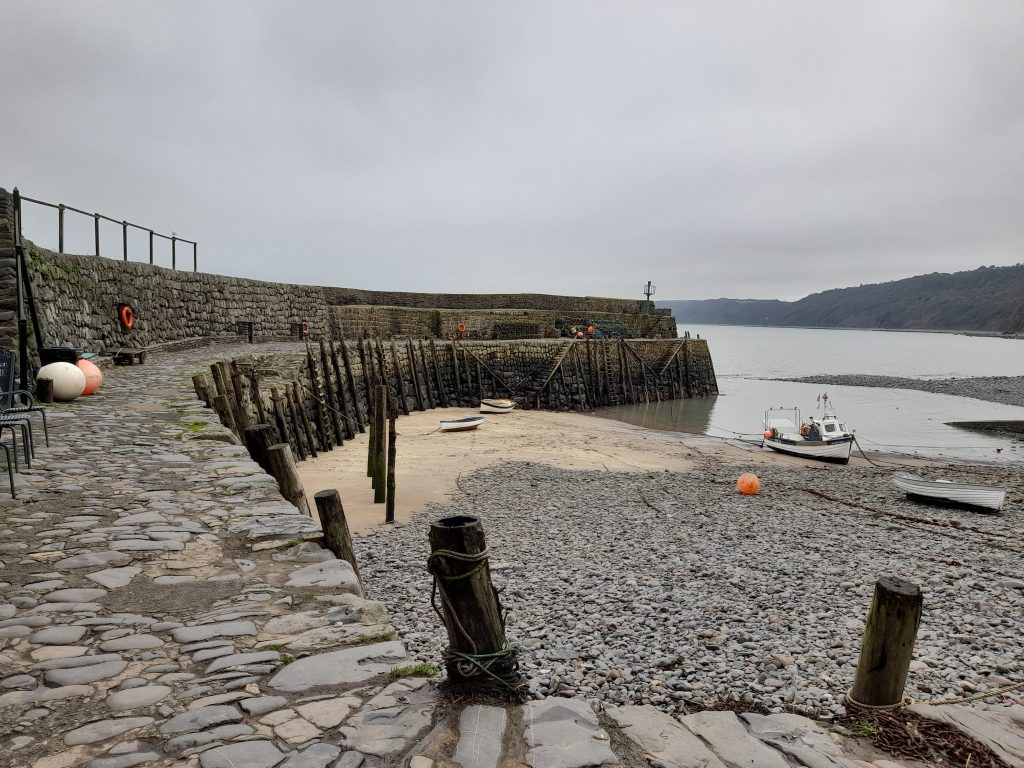
In the fourteenth century, during the reign of Richard II, The Manor of Clovelly was bought by Sir John Cary, a judge, and it remained in his family for another four hundred years. However, it was not until the late sixteenth century that Sir John’s son, George Cary, had a stone breakwater erected, creating a harbour. Indeed, it provided the only safe haven for ships along the Devon coast from Appledore to Boscastle.
George also built fish cellars and warehouses at the base of the cliff and cottages along the banks of the stream that fell steeply from the plateau above to the shore below. George Cary spent £2000 developing Clovelly into a fishing village, a small fortune in those bygone days.
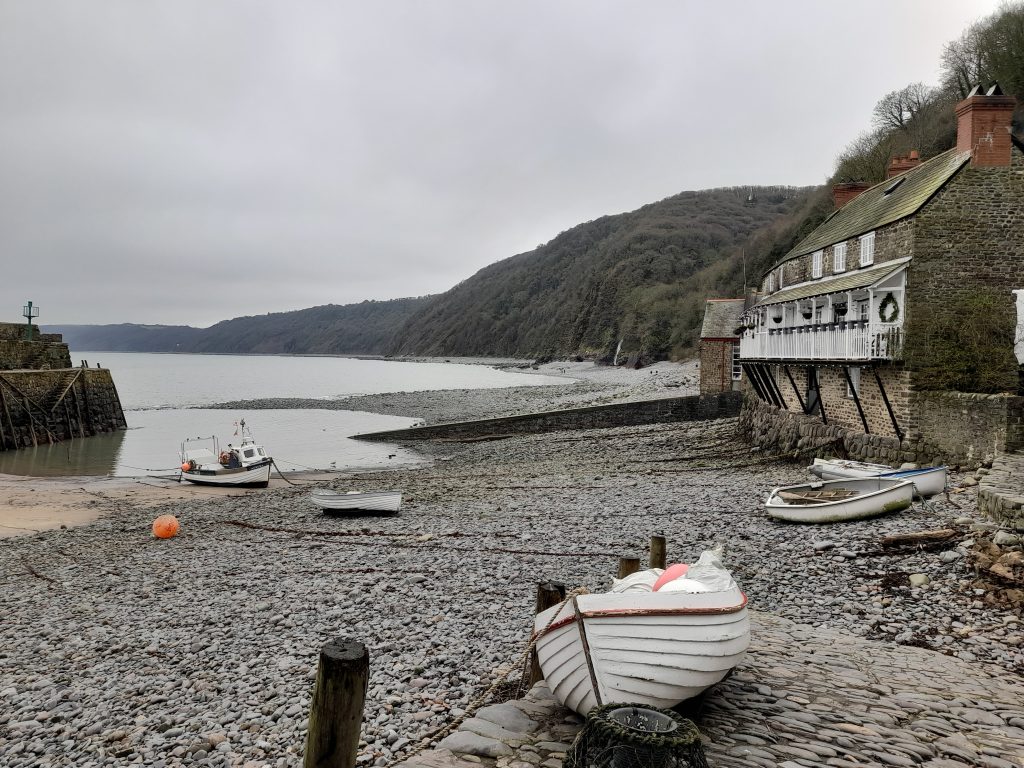
The village has always remained in private ownership, and the Clovelly Estate was purchased by the Hamlyn family in 1738. Much of Clovelly’s preservation is thanks to Christine Hamlyn, who inherited the estate in 1884 and was married in 1889. There is a lovely portrait of her in her wedding dress in the Hamlyn Room at the New Inn. She and her husband devoted themselves to renovating and expanding the ancient cottages, and her initials can be seen on many buildings. Her great grand-nephew, the Hon. John Rous, inherited the estate in 1983, and his second wife, Mary Asquith, is the granddaughter of former prime minister Herbert Henry Asquith.
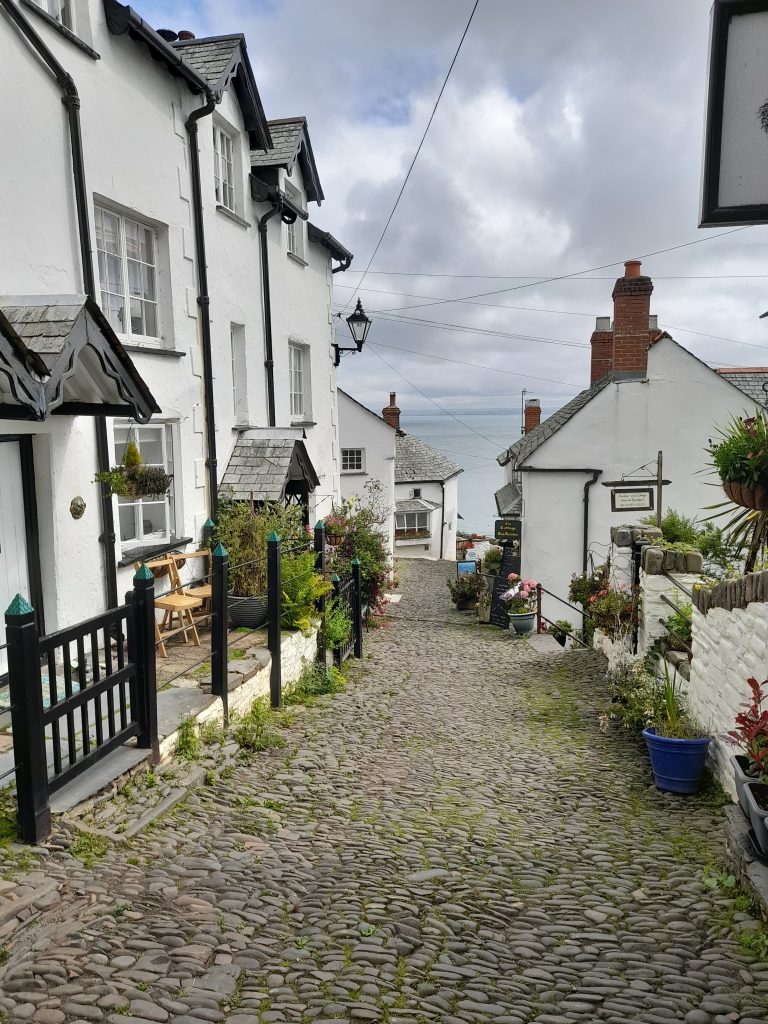
The village is built into the four-hundred-foot cliffs of the North Devon shore and has a steep, pedestrianised cobbled main street, known as Up-a-long or Down-a-long. The street was built using stones hauled from the beach. Descending this picturesque pathway is a real pleasure as it meanders through flower-strewn cottages, with smaller passageways and winding lanes branching off and offering the prospect of discovering further treasures, and, of course, there is a spectacular view out to sea. For those who do not want to brave the steep climb back to the top, there is a fare-paying landrover service.
To this day, there are no cars in Clovelly, and even if the residents wanted them, the lane would be too narrow and the gradient too steep. Instead, goods have always been delivered with donkeys, though these have largely been replaced these days with sledges. There are, however, still donkeys in Clovelly, and they can usually be found in their comfortable stables at the top of the village. In 2021, Clovelly included eighty cottages, two chapels, two hotels, woodland and two thousand acres of farmland. In the 2011 census, the parish population was 443, some 50 less than the 2001 census. The distant island of Lundy is also part of the electoral ward of Clovelly Bay.

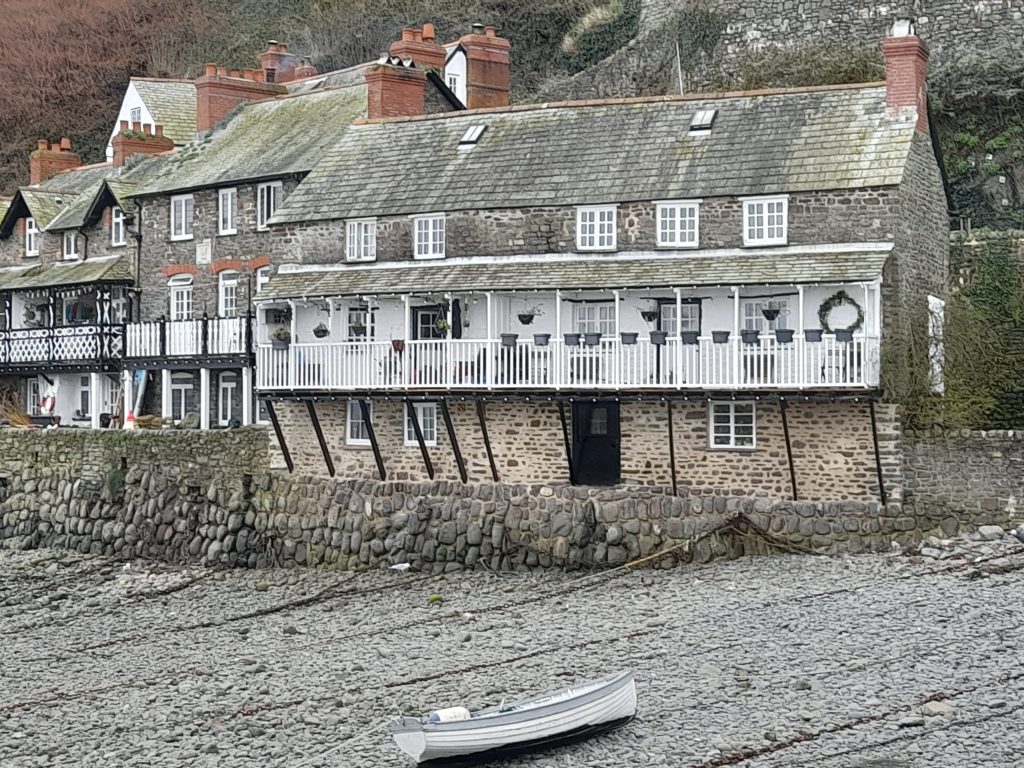
Close to the harbour is the oldest cottage in the village. Known as Crazy Kate’s Cottage, it is named after a fisherman’s widow who is said to have gone mad following the death of her husband, who drowned in 1736 while fishing in the bay. The story goes that, dressed in her wedding gown, she walked into the sea to join him in his watery grave. Crazy Kate’s Cottage is the one on the far right.
At the top of the village, it is possible to visit the Clovelly Court Kitchen Gardens and admire the herbaceous borders and restored Victorian glasshouses. The gardens are adjacent to the thirteenth-century parish church.
There are two hotels in the village: the eighteenth-century Red Lion on the Quay, which provides Devonshire fare such as delicious pasties and cream teas, and the four-hundred-year-old New Inn, located in the heart of the village.
In days gone by, the coastline saw much smuggling, wrecking and piracy and was notorious for shipwrecks, so a lifeboat station was built in 1870 at a cost of £175, and between 1899 and 1931, the lifeboat saved 158 lives. In 1988, the RNLI (Royal Navy Lifeboat Institution) closed the station, and the villagers operated their own rescue service. However, in 1998, the station was reopened, and an Atlantic 85-class lifeboat was installed in 2014. It was named in honour of Oxford student Toby Rundle, who took his own life in 2010.
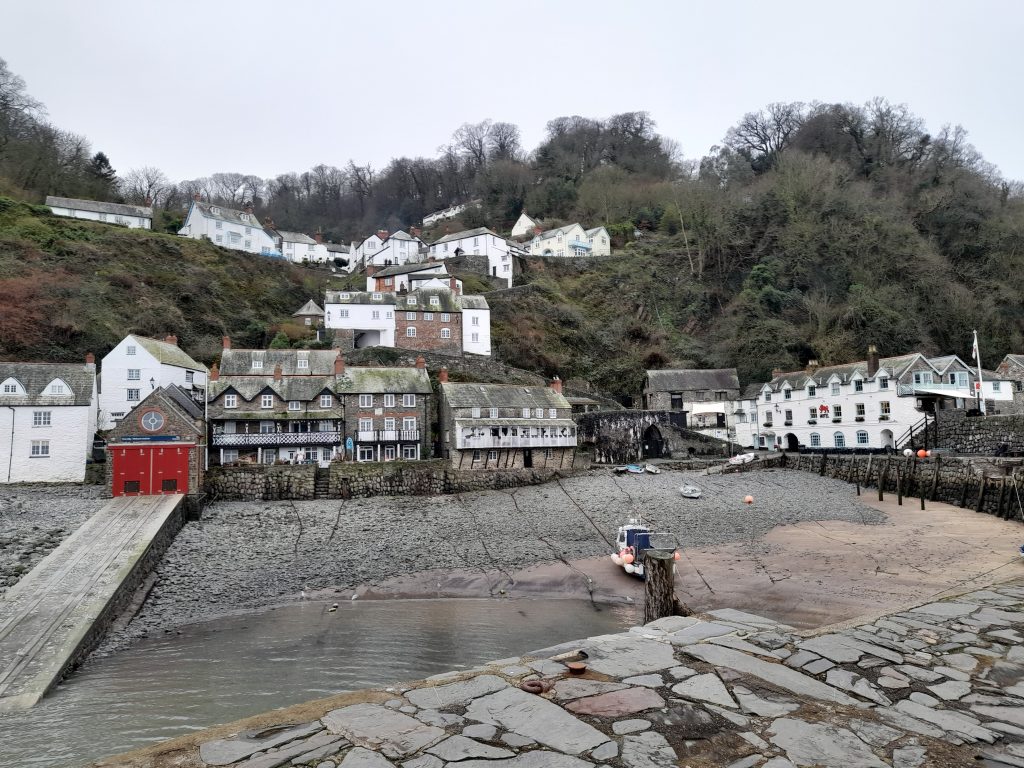
A few hundred yards past the Lifeboat Station is a beautiful waterfall cascading down the cliff face. A cave lies hidden behind the curtain of water and is allegedly the former home of Merlin the Wizard!
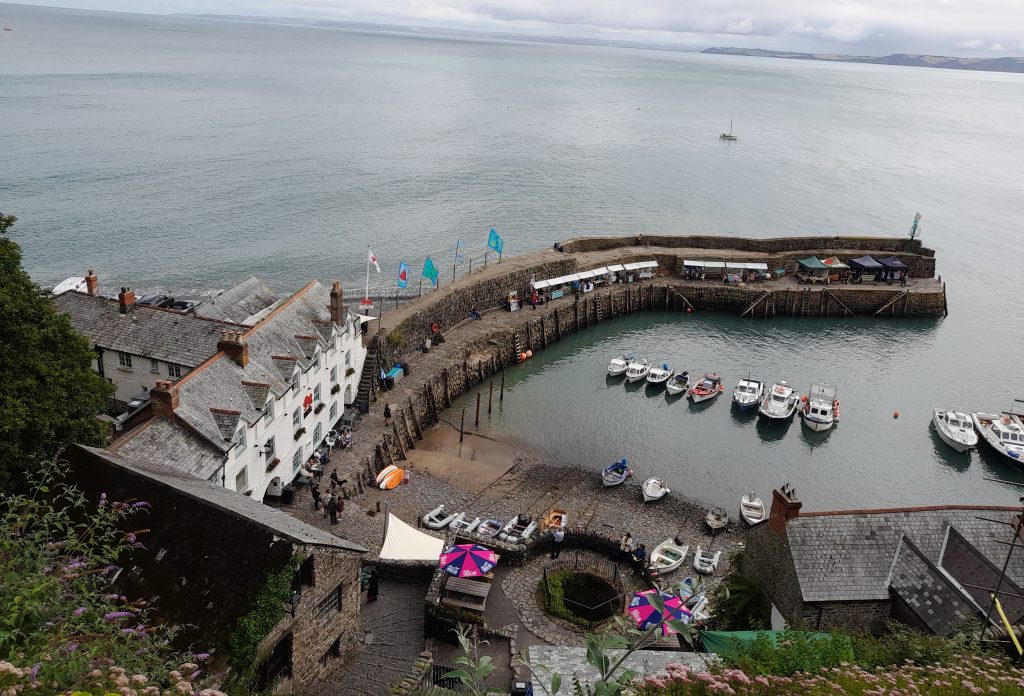
Clovelly was once a busy fishing port renowned for its herring and mackerel. Sadly, fishing has declined over the years but is still an important part of village life. Clovelly is famous for its lobsters and crabs, which are sent as far away as France and Spain. Boat trips are available and an excellent opportunity to see the stunning coastline.
Each year, Clovelly hosts several annual festivals, including the Seaweed Festival in May and the Maritime Festival in July. The Lobster and Crab Feast in September and the Herring Festival in November.
There are scenic walks to be enjoyed along the clifftops around Clovelly. Hobby Drive was built after the Napoleonic wars to provide employment to the village’s returning soldiers. The route winds its way through woodlands and offers superb views of the harbour and Bideford Bay. In the other direction, the cliffs stretch towards Hartland Point and Mouthmill Cove, once a favoured haunt of smugglers. This is a walk which my husband, Bryan and I have walked many times and is described below.
Clovelly Woodlands
The woodlands to the west of Clovelly offer a pleasant walk. The paths and carriageways were laid out by Sir James and Lady Diana Hamlyn in the early 1800s, though some of the paths are now overgrown. However, the main route to Mouthmill is well-maintained and worth exploring.
Park in the main Clovelly car park and walk down the road used by the locals, the buses, and the landrover, not through the Visitor Centre. At the road junction, turn left and go through a gate known as the Yellery Gate into a field and follow a track around the perimeter. This is the coast path and is well marked.
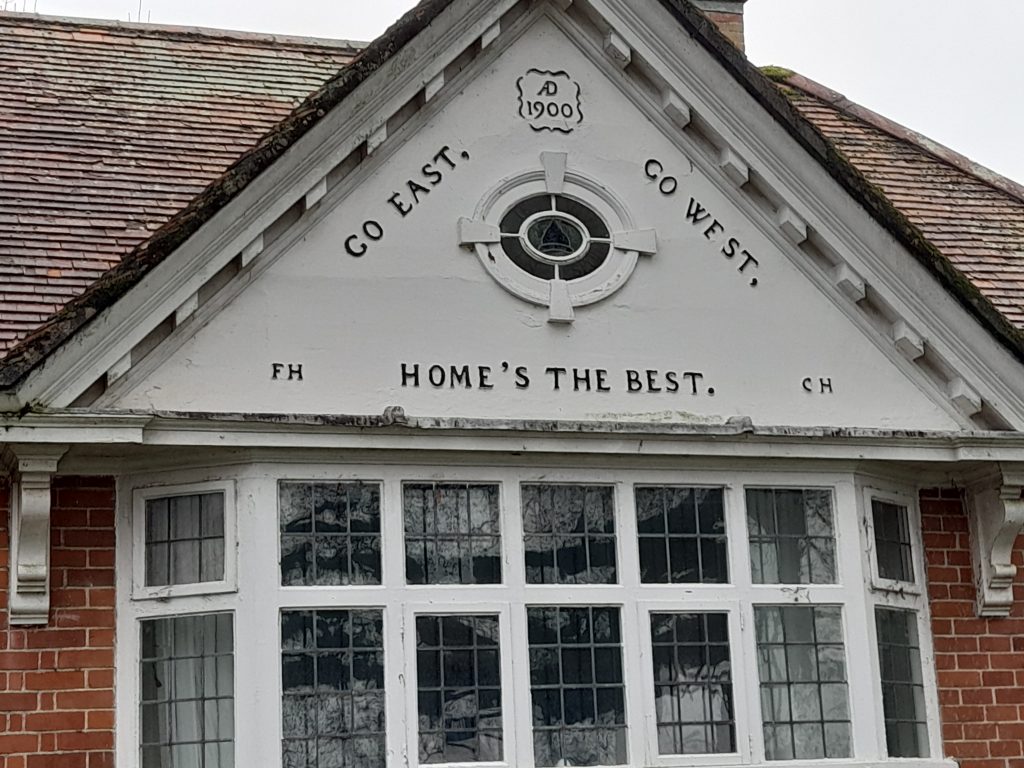
Alternatively, it is possible to park outside the church and walk down the driveway to join the coast path. This is a bungalow found at the entrance to the drive to the church, and it shows the initials of the Hamlyns and includes an interesting message. From the church, follow the drive down and turn left at the estate office, signposted to Court Farm, the traditional home of the squires of Clovelly. In spring, there are beautiful flowering cherry trees, rhododendrons and bulbs. Take the footpath to the right before reaching the farm, and then left, following the yellow arrows which keep close to the cliff edge.

Alongside the path, the walker will come across the Angels’ Wings Seat, built in 1825 so that Sir James Hamlyn could enjoy the view of Bideford Bay.
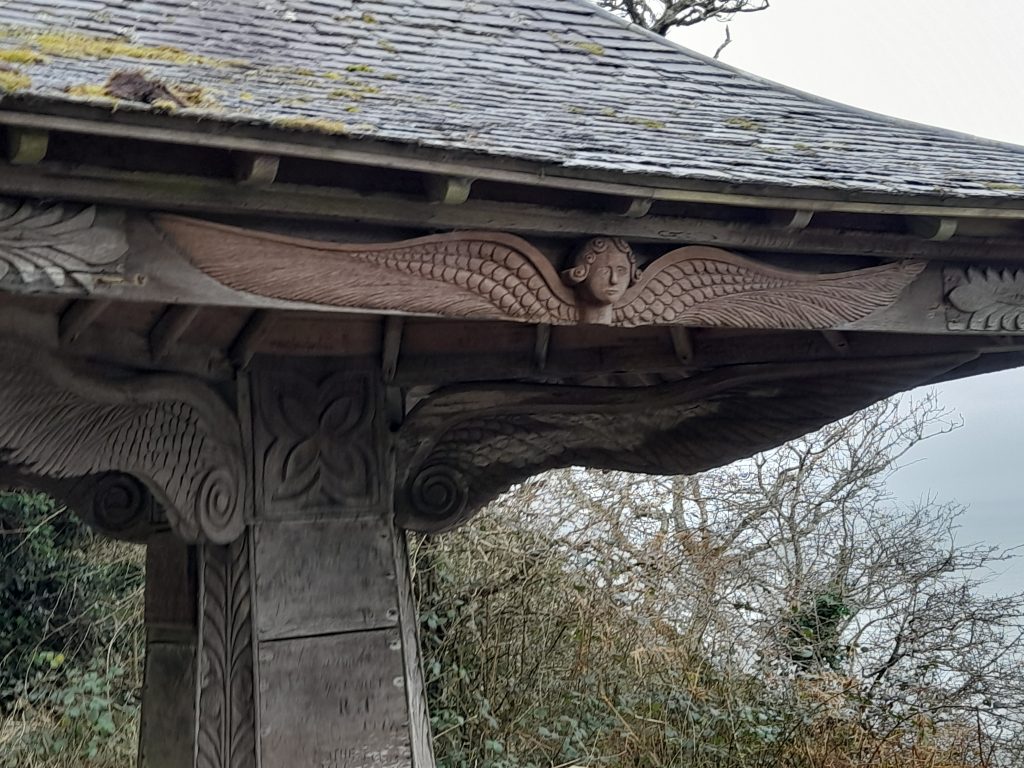
This beautiful and unusual structure has a roof of cedar shingles supported by four ornately carved angel wings.
The waymarked path descends to meet a track which leads onto Mouthmill. In the past, this path continued along the cliffs to Gallantry Bower, the quaint name given to the soaring four hundred-foot cliffs with a sudden drop to the beach below. Back into the woods, look carefully for a cleft in the rocks that leads out onto a ledge perched high on the cliff. The small branch that is supporting the archway has been there for over thirty years to my knowledge, and each time I walk under it, I wonder if this is the time it disintegrates! So far, so good!
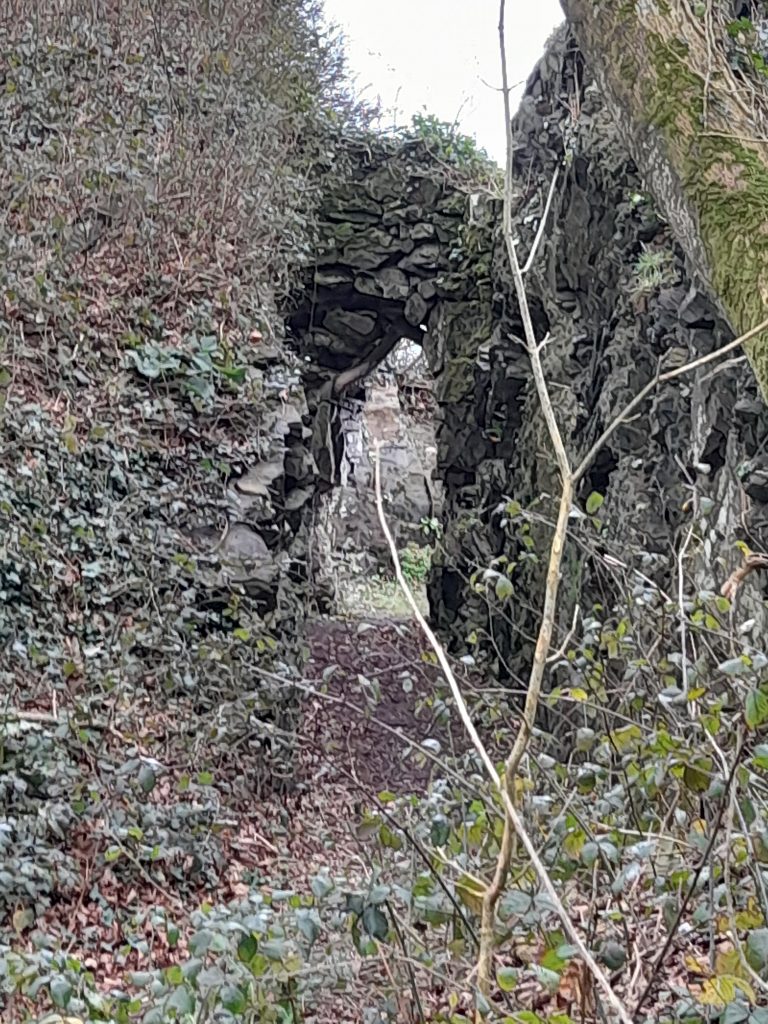
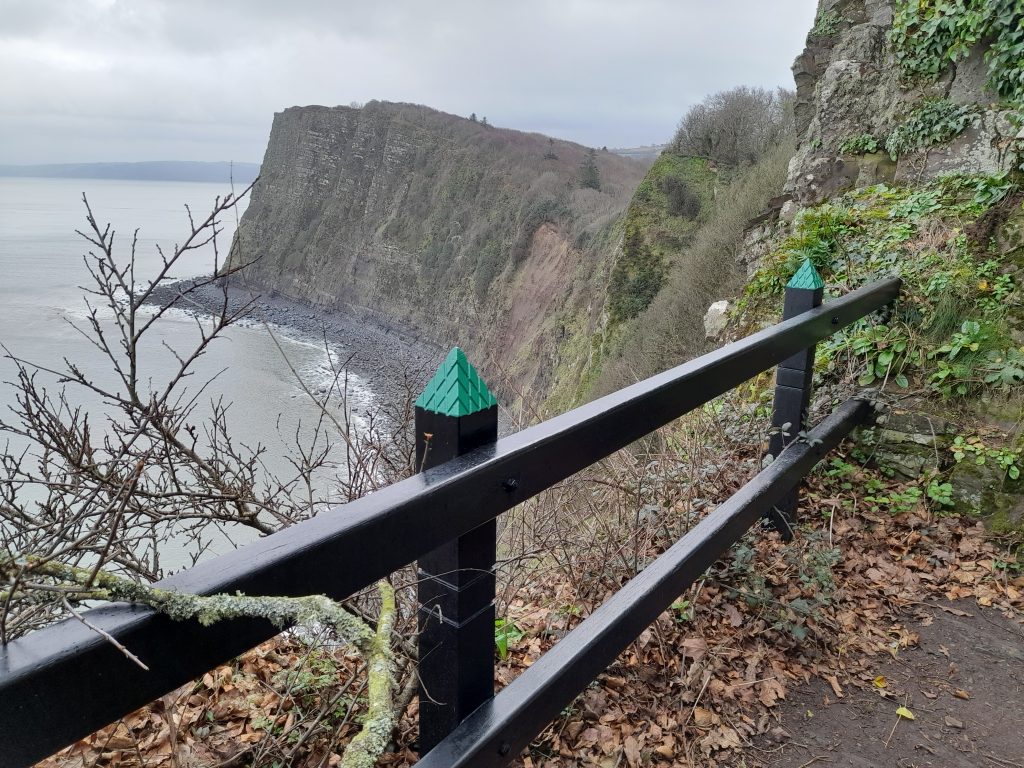
Once safely through the archway (!), this is the amazing view that will greet you. Seagulls wheel and swoop in the air, and below, if you are very lucky, you may see porpoises and seals.
This photograph shows the way back from the ledge. In years gone by, this ledge also had a seat which, sadly, is long gone. It was known as Miss Woodall’s seat in memory of a lady who lived at Mouthmill for many years and who loved to sit in this spot.
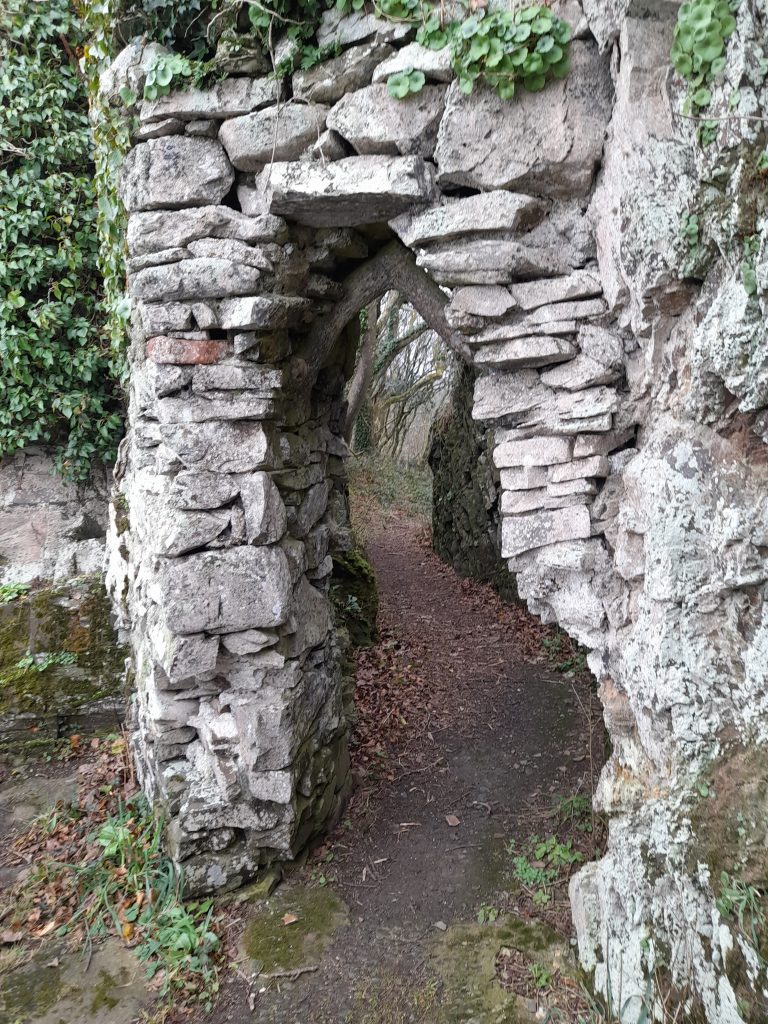
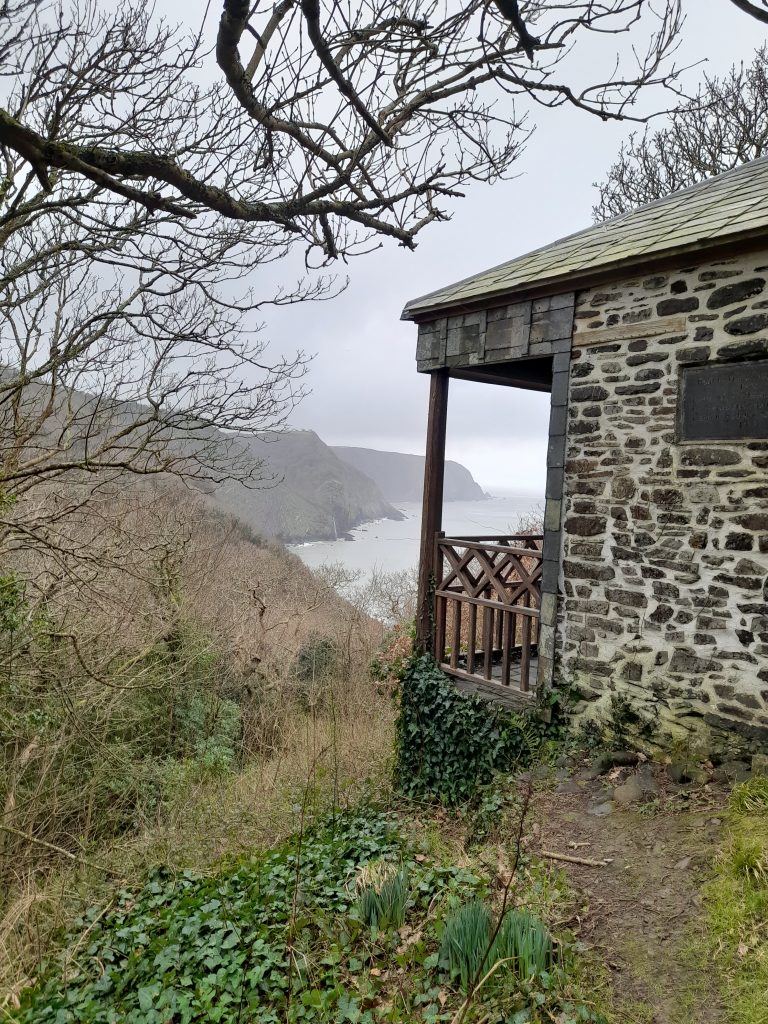
A little further on and overlooking woodlands is a summerhouse. It is a substantial building with a fireplace and veranda and was built in 1820. It was restored in 1935 as an eightieth birthday present for Christine Hamlyn, then lady of the manor.
This is the view from the balcony of the summer house. From here, a narrow, twisty path leads onto Mouthmill, but it is incredibly steep and involves difficult ducking and stooping under stunted oak trees, and it is much easier to retrace one’s steps and rejoin the estate path.
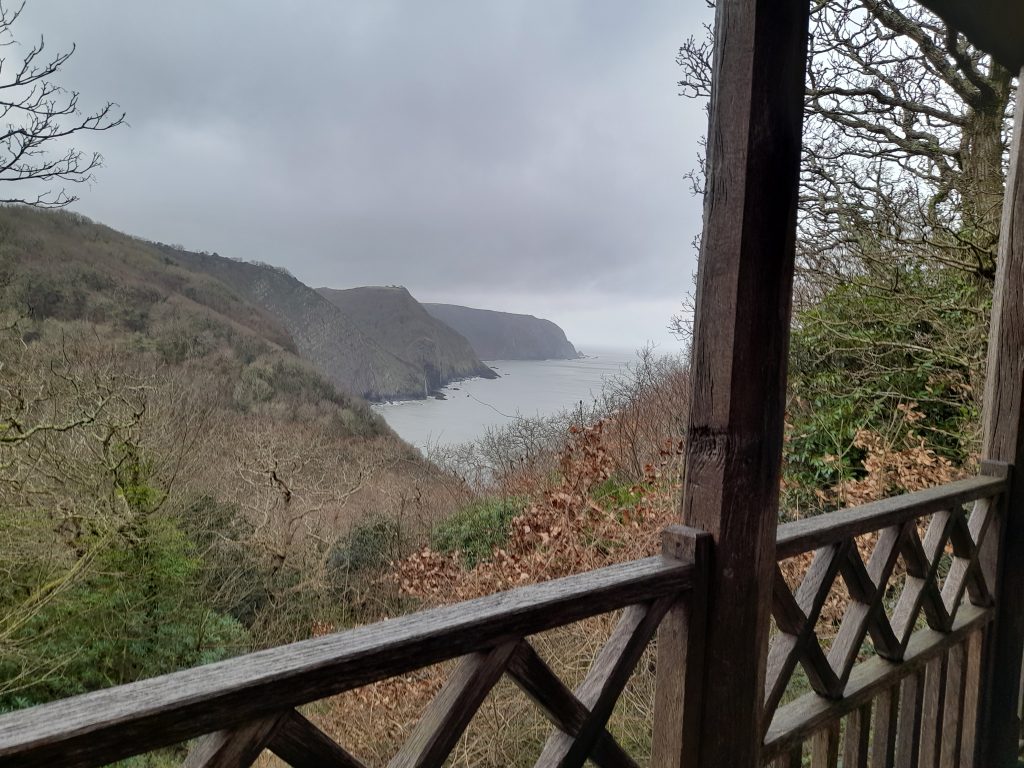
To return to Clovelly, follow the path inland alongside the stream, which will connect with the bridlepath between Clovelly and Brownsham. Turn left and then right, up an easily missed narrow sunken path that climbs steeply through the woods. This is a very ancient track, formed by centuries of use when the only transport was by packhorse or donkey. The surface is very uneven, and care is needed.
The track emerges into a field and follows the edge of the woodland to the next hedge. Turn right and walk around the field to the top and join the farm track that leads through the courtyard of Court Farm and back to Clovelly church and the path to the car park.
Leave a Reply
You must be logged in to post a comment.